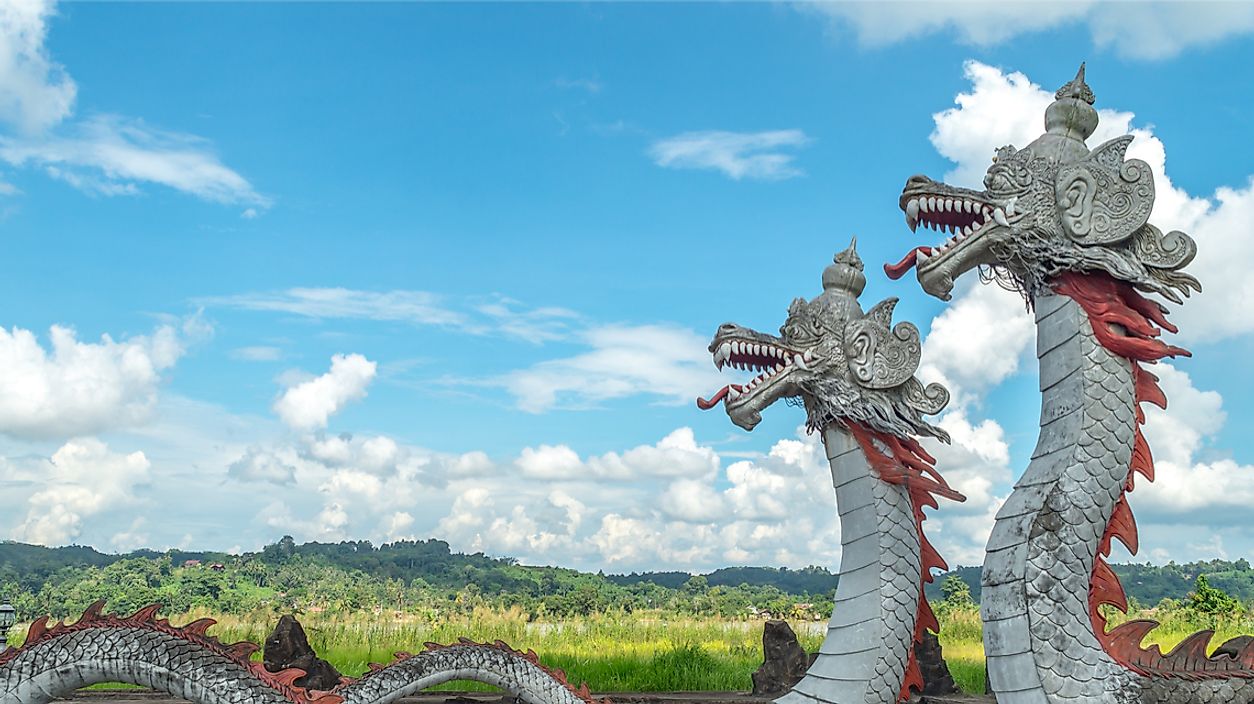Where Is the Kutai Basin Located?

The Kutai Basin is located in Indonesia, stretching from the central region of Borneo to the Makassar Strait. It starts on the eastern edge of the island and then extends over its shoreline, and out into open water. The basin is bordered by the Muller Mountains in the west, the Meratus and Schwaner Mountains in the south, and the Central Kalimantan Mountains in the north.
The Kutai Basin covers a total area of 23,166 square miles, which makes it the largest basin in Indonesia that originated during the Paleogene and Neogene periods, which were previously known as the Tertiary era. Additionally, the deepest recorded point of this “Tertiary-era” basin is 9.3 miles, making it one of the deepest in the area. The Kutai Basin continues to evolve, particularly at its lower end, where the Makaham River delta deposits sediment.
How Was the Kutai Basin Formed?
The Kutai Basin formed as the result of plate tectonic movement, which caused a number of geological responses like rifting, inversion, extension, and uplifting over a long period of time. It is located directly over the Sunda tectonic plate, which is relatively small in size. The plate is surrounded by the Pacific Oceanic plate, the Philippine plate, the Eurasian plate, and the Indo-Australian plate. At some point in history all of these plates have interacted with each other through collision or subduction, resulting in the creation of many basins in the area around Indonesia.
The Kutai basin began to form at the opening of the Makassar Strait and Celebes Sea. At the same time, thermal subsidence occurred, which means the lava-like mantel level of Earth’s crust began to cool, which makes the lithosphere level thicker. With added weight, the lithosphere sank down to a lower position, thus leaving a depressed area that formed the basin. The primary movements that led to the formation of the Kutai Basin are believed to be the collision of the Eurasian and Indo-Australian tectonic plates. When these two plates collided, the crust of the ocean floor experienced subduction under the Sunda plate, and the Philippine plate also pushed under the Sunda plate, causing the ocean floor to change shape.
Physical Characteristics of the Kutai Basin
The Kutai Basin has various physical characteristics and geologic features. Researchers have identified ocean crust material, marginal basin sediment, and island arc materials. On Borneo Island and near the Schwaner Mountains, the basin is dominated by granite batholiths, which are large igneous rocks that jut out from the crust. These objects are formed when magma cools below the surface of the earth. In contrast, the Meratus Mountain region is characterized by ophiolite, which is made of hardened ocean crust that has been displaced into the area above sea level. Most scientists classify the island region's portion of the basin as the result of a slow accumulation of materials during the Mesozoic era.











